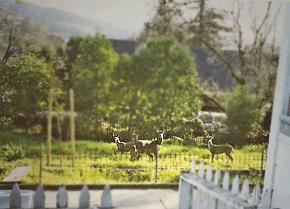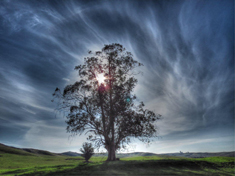Board of DirectorsPLAN is an all-volunteer 501c3 nonprofit organization, governed by a Board of Directors. We currently have two Director openings. Please contact us if interested in serving on the Board of California's badger conservation nonprofit. (info@paulalaneactionnetwork.org, 707-241-5548) Susan KirksSusan is a Naturalist with 24 years of field study and observation of American Badger. Badger, a special status mammal in California, is perceived as reclusive, but actually lives its normal life as a fossorial animal. Susan's in-depth experience includes understanding seasonal cycles, foraging and burrowing activity, identifying and protecting natal territories, and discerning characteristics of a safe and healthy habitat. American Badger, a meso predator, is a keystone species, contributing to health of coastal prairie and grassland ecosystems. Susan's work has led to documentation of multiple wildlife corridors in Sonoma and Marin Counties, including the corridor in which the Paula Lane open space property exists in West Petaluma. Susan is responsible for leadership of PLAN in implementing the Paula Lane open space project, Paula Lane Nature Preserve, monitoring habitat, species protection, and developing volunteer and education programs. Susan often gives presentations to organizations and groups on conservation and learning about badgers - globally and regionally. She consults with organizations and property owners to facilitate an understanding of badgers in grassland, in upland and coastal areas, to support coexistence. Susan has consulted on a PBS documentary about the Rocky Mountain Wildlife Corridor and for badger understanding and filming for a TV series on biodiversity at Apricot Lane Farms in southern CA, being produced by Farmlore Films LLC for Nat Geo/Disney. Susan participated in the Inaugural Leadership Academy in 2011 of the Center for Ecoliteracy in Berkeley, enjoying the creative process with teachers and nonprofit leaders in the Bay Area, creating environmental and food security projects. Susan served as a 2nd District representative 2008-2010 on the Sonoma County Ag and Open Space District's Citizens Advisory Committee. She participates in a statewide Wildlife Corridor Work Group and has served on the Policy Committee of the regional open space coalition, Together Bay Area. Susan has also served 5 terms as President of Madrone Audubon in Sonoma County, along with fulfilling roles of Vice President, Co-Chair of Renewable Energy/Climate Change Subcommittee/Conservation, and Membership Chair. She led Madrone Audubon's effort for the City of Petaluma attaining the Ramsar Wetlands of International Importance designation for Petaluma Wetlands, received in 2018. Each year, Susan manages the intense implementing and maintaining of nesting support for herons and egrets on West 9th St. in Santa Rosa, managing an encroachment permit with the City of Santa Rosa, and supporting Bird Rescue Center dedicated volunteers March-September. Susan represents Madrone Audubon in multiple public meeting settings on critically important conservation issues. Susan served on the Board of Directors of Rebuilding Together Petaluma 2008-2012 and was in the first Petaluma Wetlands Alliance Docent class in 2006. Past professional experience includes as a licensed acupuncturist in California and an adjunct professor of organizational communication in the Undergraduate Business School of Golden Gate University. Susan is an advocate for social and environmental justice, with experience in domestic and wildlife rescue and rehabilitation and humane treatment of animals and wildlife. She participated in a rescue and adoption effort for Premarin foals in California in 1999. Her beloved horses, Coco and Chester, adopted at the age of 1 year, are now 23 and 24, living a natural life. Susan's education includes a B.A. in Communication with Honors from North Carolina State University, an M.S. Degree in Communication from Syracuse University Newhouse School of Communication, and an M.S. Degree in Traditional Oriental Medicine from Emperor's College of Oriental Medicine in Santa Monica. Susan's dedication to badger conservation and intersections with grassland ecosystems, wildlife corridors and crossings and human sensitivity to our environment and conserving wild areas anchor PLAN as a nonprofit organization recognized in California as the badger conservation organization. Susan also provides insights and guidance when inquiries are received from out of state, including Washington State, Utah, Texas and Colorado to date. The Paula Lane Nature Preserve was created to represent a low impact-high "use" property - with protected habitat, small sustainable agriculture areas, benches and 2 trails for wildlife viewing (without encroachment), and volunteer and education programs in habitat restoration enhancement - for the badgers, over 100 avian species, and multiple other wildlife species, including mothers of wildlife, safe to give birth and begin to raise their young at this property because of the mother badger in her natal territory, anchoring this property for safe habitat and foraging. Paul RattayPaul has worked with threatened and endangered turtles & tortoises for over 40 years, participating in both captive husbandry and field conservation, along with personal study of natural history of many species found across the world. He is a resident of Sonoma, California. where he raises breeds of several tortoise species and subspecies of Chelonia from Africa and the Mediterranean. He has participated as a volunteer researcher in a multi-year study of the North America Box Turtle led annually by herpetologists from the University of Rhode Island. The study at a site in the NE U.S. aims to track ongoing population density and assess measures that protect against population threats. His curiosity for species under threat turned to an interest in the history and status of American Badger in California. Paul has assisted PLAN with observations and reports of American Badger sightings, deceased and living, in Sonoma County. He also has a professional background in technology and participates in research projects to assess natal territories and movement areas for badgers. Paul's extensive conservation experience and care for our natural world deepen PLAN's ability to contribute to support for American Badger survival and biodiversity. Curtis CavinEleven years ago, Curtis Cavin turned a life-long interest in wildlife into action, observing them on trail cameras he set up in a wildlife conservation area adjacent to his home along Blucher Creek near Sebastopol. When he observed behavior that was unusual, he would seek out experts on that animal to educate him. When he started seeing an increasing number of badgers, he was intrigued by their elusiveness and their nesting habits. He reached out to PLAN’s Susan Kirk to learn more. A self-described citizen scientist, Curtis documents sightings for several agencies and organizations that gather wildlife data for research or wildlife management. He currently maintains at least ten trail cameras near the Laguna de Santa Rosa and on various private and publicly-owned properties with limited or no public access. A 37-year resident of Sonoma County, Curtis is now retired from a career in facility management and non-profit administration. His interests include gardening, pottery, wire art, hiking and attempting to appease a natural curiosity on a plethora of subjects. A seasoned world traveler, he has visited 28 countries around the world, living in Asia for five years where he worked as a journalist and became fluent in the Thai language. As a PLAN board member, Curtis contributes in-depth experience to support PLAN's process of identifying and protecting natal territories, along with documenting and considering juvenile badger dispersal patterns. His s approach, like PLAN's, is one of respect for and distance from wildlife, while learning, educating, and supporting species conservation. Curtis has noted, "Most people around here don’t even know we have badgers, and few know much about them. Yet most data on verified sightings show the highest concentration nationally is right here in the Bay Area.
Picture: Deer herd on Paula Lane, foraging in early morning. (Note: Our beloved deer are currently displaced from the community by negative construction impacts. Read more at Conservation Alerts) |

